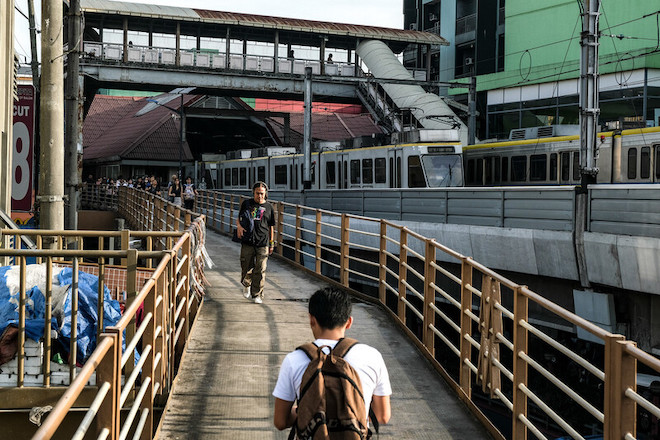
The South Commuter Railway (SCR) project in the Philippines is touted as the Asian Development Bank’s (ADB) largest infrastructure financing in Asia and the Pacific, with ADB approving $4.3 billion to help finance the construction of nearly 55 kilometers of modern suburban railway line connecting Metro Manila with the city of Calamba in Southern Luzon.
Once completed, the railway will help ease road traffic congestion, contribute to a reduction in greenhouse gas emissions in line with the Philippines’ climate change agenda, and reduce travel time between Manila and Calamba by over half, from 2.5 hours currently by road.
"The South Commuter Railway Project will provide affordable, safe, reliable, and fast public transport for commuters,” said Ahmed M. Saeed, ADB vice-president for East Asia, Southeast Asia, and the Pacific. "This project represents ADB’s biggest infrastructure investment and reflects our commitment to helping the Philippines attain its goals of reducing poverty, improving the lives of Filipinos, and achieving green, resilient, and high economic growth."
Closing the distance between job seekers and job opportunities
Project benefits go beyond transport. A new ADB study found the project will help fill gaps in the labor market by closing the distance between job seekers and job opportunities, improving labor market matching efficiency and quality of life as well as productivity of residents.
The study quantifies the effects of the railway project on job accessibility for residents in Metro Manila and suburbs. The job accessibility analysis estimates and compares the number of jobs within a 1-hour commute before and after the completion of the project.
The areas within and outside of Metro Manila that make up the the project's catchment area currently differ considerably in wages, job accessibility, and other labor indicators. Poorer areas tend to have low access to more and better jobs.
The study notes the project will benefit workers in at least 48 cities and municipalities in Metro Manila and Southern Luzon in getting to work. Workers in cities and municipalities with railway stations will gain access to more than 300,000 jobs on average—an increase of 15.3% in the south and 8.5% in Metro Manila.
“The improvement could lead to better labor market matching, higher income for workers and more job opportunities for low-income households,” says the study.
Decongesting Metro Manila
Home to 12 million people, Metro Manila, the country's capital, is among the most severely congested cities in the world. Millions of workers from within the metropolis and surrounding provinces commute to their workplaces every day, braving traffic and crowds given the inadequate public transportation system.
The project includes the construction of 18 stations designed to provide safe access for all, including the elderly, women, children, and people with disabilities. There will also be a connecting tunnel to allow the operation of direct trains from Calamba to stations on the future Metro Manila subway system. The railway will also be designed to be resilient against disasters like typhoons and earthquakes.
Most users of the urban rail service are from the higher income groups. Operated efficiently and priced optimally, the rail service will encourage people across more income groups to shift to rail as their preferred form of transport.
Beyond job accessibility
The benefits of the SCR can go beyond increase in job accessibility, the study says as the analysis does not account for the great network-enhancing role of the SCR when viewed as part of ongoing rail network expansions that include the Malolos–Clark railway, the Malolos–Tutuban segment, the Light Rail Transit South Extension, and the Metro Rail Transit Line 7.
Also, since the study assumed the locations of residence and employment are fixed it does not consider that over the longer term, improved mobility could lead people to change residence for better amenities and firms to relocate for better employees and market access.
A well-functioning public transit could result in a significant increase in urban land value. Accompanied with necessary policy reforms, more efficient distribution of the incremental land value could contribute to further increase in productivity and overall welfare.
Quantifying these benefits is worth further study, the report notes. “Considering the high job concentration and mobility challenges shared by other mega cities in developing Asia, the replicability of this study lends itself well to gain additional insights under the context of other cities in developing member countries.”
The South Commuter Railway Project will be financed under a multitranche financing facility, with the first tranche of $1.75 billion to be made available starting this year. The release of the second and third tranches is expected in 2024 and 2026, respectively. ADB will finance civil works for the railway viaduct, stations, bridges, tunnels, and depot buildings. The Japan International Cooperation Agency is funding the rolling stock and railway systems.
The project is one of the Philippines’ infrastructure flagship projects and is part of the government’s “Build, Build, Build” infrastructure development program. Other infrastructure flagship projects financed by ADB include the Metro Manila Bridges Project in 2021, the EDSA Greenways Project in 2020, the Angat Water Transmission Improvement Project in 2016 and additional financing in 2020, the Malolos Clark Railway Project in 2019, and the Improving Growth Corridors in Mindanao Road Sector Project in 2017.

